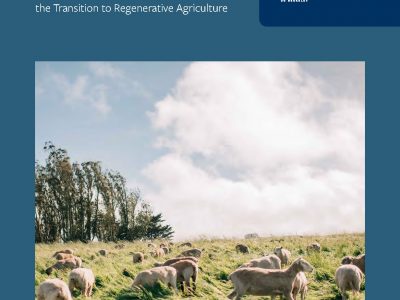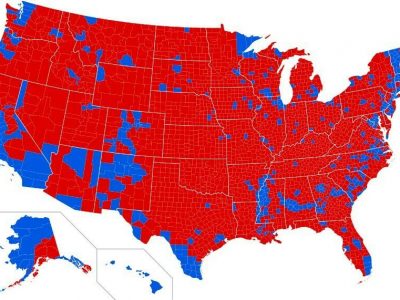Region: National
DC Circuit Gets Help from Grid Experts in Vacating ACE Power Plant Rule
The importance of understanding how things work
I’ve seen lots of good analysis already (including this post from Dan) of the DC Circuit’s decision today to invalidate the Trump Administration’s ACE Rule, which governs climate emissions from coal-fired power plants and does essentially nothing to reduce those emissions. It turns out that doing essentially nothing is not enough. There’s a lot to …
Continue reading “DC Circuit Gets Help from Grid Experts in Vacating ACE Power Plant Rule”
CONTINUE READINGA Big Win for Climate Regulation
The DC Circuit overturns Trump’s effort to hamstring regulation of carbon from power plants.
The D.C. Circuit issued an opinion today knocking out Trump’s Affordable Clean Energy rule. The Trump rule was a rollback of Obama’s keystone climate initiative, the Clean Power Plan. The majority opinion plus dissent take up 185 pages, and I won’t try to describe it all here. Briefly, here’s what the appeals court ruled and …
Continue reading “A Big Win for Climate Regulation”
CONTINUE READINGTrump’s Pro-Environmental Acts — A VERY Short List
Despite its general hatred of environmental protection, the Trump Administration did manage a few positive steps.
This being the last day of Trump’s presidency, it’s appropriate to look back on his environmental record. Basically, Trump was to environmental law as General Sherman was to Georgia. In the time between his “American carnage” Inaugural Address to his unleashing of carnage on Capitol Hill, he and his minions devoted themselves to environmental destruction. …
Continue reading “Trump’s Pro-Environmental Acts — A VERY Short List”
CONTINUE READINGStrategies to Reverse Federal Environmental Rollbacks
Last month, CLEE released a website that compiled over 180 Trump Administration environmental policy rollbacks, from the repeal of the Clean Power Plan to the removal of government climate change websites. We tracked and evaluated these rollbacks based on their environmental, climate, public health, and programmatic impacts; identified the pathway and difficulty of reversal; and …
Continue reading “Strategies to Reverse Federal Environmental Rollbacks”
CONTINUE READINGRethinking Presidential Administration
Giving the President more control of regulation has been a good thing — up to a point.
Conservatives love to complain about faceless bureaucrats, but blaming bureaucrats for regulations is hopelessly out of date. When Elena Kagan was a professor, she wrote an article called “Presidential Administration.” The article applauded her former boss Bill Clinton for seizing greater control of the regulatory process away from agencies. That trend has accelerated to the …
Continue reading “Rethinking Presidential Administration”
CONTINUE READINGToday Versus 2008
Despite Trump’s efforts, he couldn’t actually reset the clock to the pre-Obama era.
Obama moved us forward. Trump moved us backwards. Are we back where we began? No. Biden starts from a significantly stronger position than Obama did in 2008. In 2008, like today, the outgoing Republican President had adamantly opposed climate action, favored the oil and gas industry, and turned a cold shoulder toward environmental regulation. Trump …
Continue reading “Today Versus 2008”
CONTINUE READINGAgriculture As A Climate Solution
New CLEE / Berkeley Food Institute report on how to promote regenerative agriculture
The climate fight should ultimately benefit all communities, just as they are all part of the solution. Agricultural communities are no exception. Farmers and ranchers can implement climate-friendly techniques that both sequester carbon and boost profits and long-term sustainability (sometimes referred to as “regenerative agriculture”). Examples of these practices include crop diversification and rotation, cover …
Continue reading “Agriculture As A Climate Solution”
CONTINUE READINGNext Steps to Save the Global Environment
A lot will need to be done to undo Trump’s harm to global cooperation. Here’s a start.
Trump’s hostility domestic environmental regulation is notorious. He also stalled or backpedaled on the international front. Here are seven steps that President Biden could take to remedy the situation. Rejoin the Paris Agreement. The U.S. needs to immediately rejoin the Paris Agreement. It also needs to update its climate target, because we can do a …
Continue reading “Next Steps to Save the Global Environment”
CONTINUE READINGThe Georgia Elections, the Republican Schism, and the Environment
The prospects for a green stimulus bill have improved
Although the word is overused, last week really did see a seismic shift in the political world. Actually, there were two earthquakes — the victories of Democrats Warnock and Ossoff in Georgia, and the violent invasion of the U.S. capitol incited by Trump. While the significance of these events is much broader, their relevance to …
Continue reading “The Georgia Elections, the Republican Schism, and the Environment”
CONTINUE READINGClimate Politics and the Urban-Rural Split
How do we sell climate policies to huge swathes of Trump country?
The 2020 elections revealed America as bitterly divided as ever. The split between rural and urban voters is intensifying, with rural voters delivering massive support to Trump and down ticket Republicans. Success in decarbonizing the economy will ultimately require the support of those voters. Short of a miraculous turnaround in attitudes about climate change, how …
Continue reading “Climate Politics and the Urban-Rural Split”
CONTINUE READING











